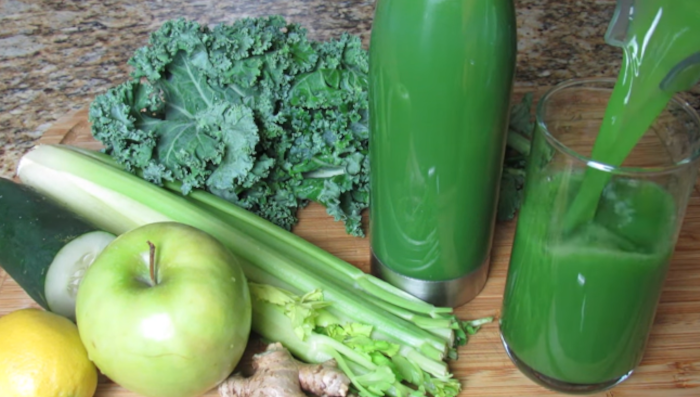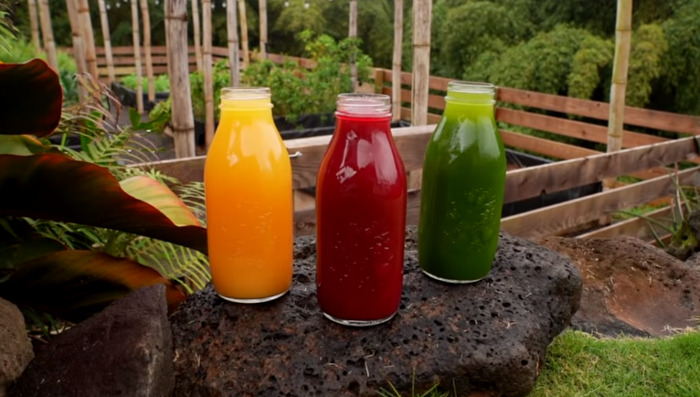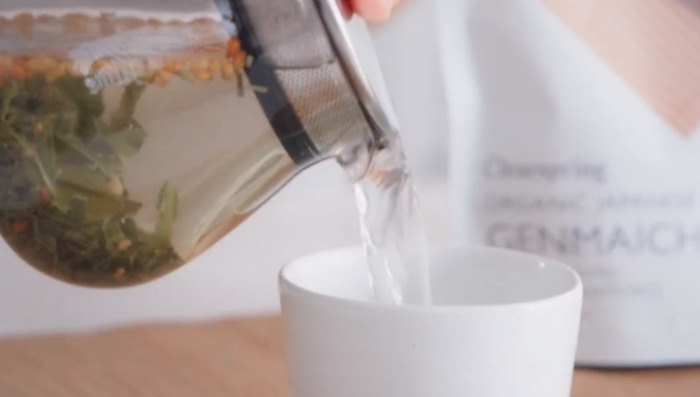Green juice for weight loss has become a popular trend for those looking to shed pounds and boost overall health. It’s not just a fad; there’s science behind the benefits. By incorporating ingredients like kale, parsley, cucumber, lemon, green apples, fennel, and celery, you can create a nutrient-rich beverage that aids in weight loss and provides essential vitamins and minerals.
These ingredients work together to hydrate the body, improve digestion, and reduce cholesterol levels. For example, celery aids in controlling blood sugar levels and helps with joint pains, while cucumber hydrates and flushes out toxins. The addition of ginger and lemon enhances the taste and adds medicinal properties, making the juice not only delicious but also highly beneficial.
Whether you’re using a masticating juicer that preserves nutrients or a centrifugal one for immediate consumption, green juice can be a vital part of your weight loss plan. It’s not just about losing weight; it’s about embracing a lifestyle that prioritizes health and well-being. By understanding the context and benefits of each ingredient, you can tailor your green juice to your specific needs and preferences. It’s a simple, fresh, and vibrant way to take control of your health.
Ingredients of green juice for weight loss
Here’s a list of ingredients for a green juice recipe designed for weight loss:
- 4 large leaves of lacinato kale (optional): Rich in micronutrients, adds a dark leafy green touch.
- 1 bunch of flat-leaf (Italian) parsley (about 4 ounces/113 grams): Mild flavor, includes stems, contributes nutrients and fresh flavor.
- 1 large cucumber (about 12 ounces/340 grams): Includes skin, hydrates, and adds volume.
- 2 medium lemons, peel, and pith removed: Adds tanginess and freshness.
- 2 small green apples (about 8 ounces/227 grams total): Granny Smith or similar, adds sweetness and tartness without too much sugar.
- 1 large bulb of fennel (about 20 ounces/600 grams): Includes fronds, and adds mild and nuanced flavor.
- 1 bunch of celery, including leaves (about 1 pound/454 grams): A workhorse of green juice, mild flavor, contributes volume.
- 1 piece of peeled ginger: Treats nausea-like symptoms, adds warmth and helps with digestion.
- Lemon extract: Enhances flavor, fights inflammation, and reduces cholesterol levels.
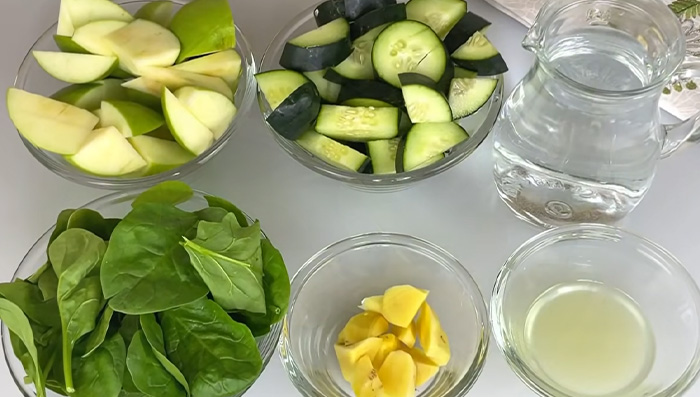
Equipment:
These tools are essential for preparing green juice in an efficient and effective manner:
- Juicer: Either a masticating juicer like the Kuvings Whole Slow Juicer, which preserves nutrients for a longer period, or a centrifugal juicer like the Breville Juice Fountain for immediate consumption.
- Fine-Mesh Strainer: To strain the juice if desired, for a smoother texture.
- Blending Jar: If using a blender, a suitable jar to hold the ingredients.
- Knife: To cut and peel the fruits and vegetables as required.
- Cutting Board: For chopping the ingredients.
- Serving Glass: To serve the juice fresh.
- Airtight Container: If storing, a quart-sized mason jar or similar to keep in the fridge for two to three days.
- Compost Bin: Optional, for discarding or composting the pulp.
Steps for making green juice for weight loss:
Follow these instructions for making green juice for weight loss:
1. Preparation: Start by gathering all your ingredients. Ensure they’re fresh and washed thoroughly. If possible, opt for organic produce to minimize pesticide intake.
2. Chopping: On a clean cutting board, using a sharp knife, chop your ingredients. For instance, cut the celery into smaller pieces, peel the ginger, and remove the seeds from the apple.
3. Juicing: Turn on your juicer. Gradually feed the chopped ingredients through the juicer. If you’re using a masticating juicer, it’ll chew up the ingredients, extracting the juice and preserving the nutrients.
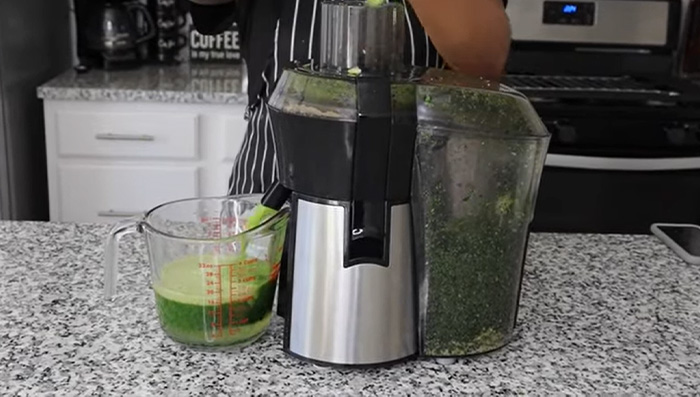
4. Straining: Once you’ve juiced all the ingredients, pour the juice through a fine-mesh strainer into a clean container. This step ensures a smoother texture, removing any unwanted pulp.
5. Serving: Pour the strained juice into a serving glass. For the best flavor and nutrient retention, consume immediately.
6. Storing: If you’re not drinking the juice right away, transfer it to an airtight container, like a mason jar. Store in the fridge for up to two to three days. Remember, the fresher the juice, the better the taste and nutrient content.
7. Cleanup: Clean your juicer immediately after use. It’s easier to clean when the pulp hasn’t dried. Most juicers come apart easily and can be rinsed under warm water. Check the manufacturer’s instructions for specific cleaning guidelines.
8. Enjoy: Sit back, relax, and enjoy your homemade green juice. Not only is it delicious, but it’s also packed with nutrients that support weight loss and overall health.
What are the Substitutions of Green Juice for Weight Loss?
Making a green juice doesn’t have to be rigid. It’s all about finding what flavors and ingredients work best for you. These substitutions ensure you can still whip up a nutritious drink even if you’re missing a few items:
- Kale: If you’re out of kale or just not a fan, spinach is an excellent alternative. It’s packed with nutrients and has a milder taste. Use a handful or about 2 ounces as a substitute.
- Parsley: No parsley on hand? Try cilantro. It offers a unique flavor and has detoxifying properties. Use an equivalent amount, roughly 4 ounces.

- Cucumber: Zucchini can step in for cucumber. It provides a similar texture and water content. Use one medium-sized zucchini as a replacement for a 12-ounce cucumber.
- Lemons: If lemons aren’t available, limes can be used. They add a tangy kick and are rich in vitamin C. Substitute two medium limes for two lemons.
- Green Apples: Pears are a sweet and juicy alternative to green apples. They blend well in juices and are rich in fiber. Use two small pears for two green apples.
- Fennel: If you’re not a fan of fennel’s licorice flavor, celery can be a good replacement. It adds a salty touch and is hydrating. Use half a bunch of celery for one fennel bulb.
- Celery: If you’re out of celery, you can use cucumber for its hydrating properties. Remember, cucumber has a milder flavor, so adjust quantities accordingly.
How to store juice?
Storing juice correctly is crucial to maintain its taste and nutritional value. With these steps, you can enjoy your green juice while ensuring it remains as beneficial as when first made.
- Airtight Containers: Always pour your juice into airtight containers. This minimizes oxidation, preserving the juice’s flavor and nutrients. Mason jars work wonders for this purpose.

- Refrigeration: Fresh juice should be refrigerated immediately. If you’re using a masticating juicer, your juice can be stored for up to two to three days. For those with centrifugal juicers, it’s best to drink the juice within 24 hours.
- Limit Air Exposure: Fill your container to the top to limit the juice’s exposure to air. This helps in retaining its freshness.
- Freezing: If you’re looking to store your juice for an extended period, freezing is an option. However, remember that solid bits might settle at the bottom once defrosted. While the texture might change, the nutrients remain.
- Labeling: If you’re making multiple batches, label them with the date of production. This helps in tracking freshness and ensures you consume the oldest batch first.
- Dark Storage: Light can degrade the nutrients in juice. Store your juice in a dark part of the fridge or use tinted containers.
- Avoid Plastic: If possible, avoid storing juice in plastic containers. They can leach chemicals into the juice. Glass is a safer and more eco-friendly choice.
Green juice health benefits:
Incorporating green juice into your daily routine can offer a myriad of health benefits:
- Nutrient Boost: Green juices are packed with vitamins and minerals. From vitamin C in kale to potassium in cucumbers, you’re getting a concentrated dose of essential nutrients.
- Hydration: Ingredients like cucumber and celery are high in water content. This helps in keeping you hydrated, especially on hot days.
- Digestive Aid: Ingredients such as fennel and apple can promote better digestion. They help in soothing the digestive tract and reducing bloating.
- Detoxification: Green juices can aid in detoxifying the body. The chlorophyll in greens helps in purifying the blood and removing toxins.
- Weight Loss: Low in calories yet nutrient-dense, green juices can be a great addition to weight loss regimens. They provide essential nutrients without the added calories.
- Skin Health: The antioxidants in green juices can lead to better skin health. They combat free radicals, leading to a clearer complexion.
- Energy Boost: Feeling sluggish? A glass of green juice can provide a quick energy boost, thanks to its rich nutrient profile.
- Immunity Boost: With ingredients rich in vitamin C and other immune-boosting compounds, green juices can help in fortifying your body’s defenses.
- Reduced Inflammation: Ingredients like kale and parsley have anti-inflammatory properties. This can help in reducing inflammation in the body.
- Mental Clarity: The nutrients in green juices can aid in improving mental clarity and focus. They provide the brain with essential nutrients for optimal function.
Conclusion:
Green juice has cemented its place in the health and wellness world, and for good reason. Packed with essential nutrients, it offers a concentrated dose of vitamins and minerals that can boost energy, aid digestion, and promote weight loss. The versatility of ingredients allows for a range of flavors and health benefits, from detoxification to improved skin health. Remember, the type of juicer you use can impact the nutrient retention, with masticating juicers preserving nutrients for a longer duration.
Storing your juice correctly ensures you get the most out of every sip, and understanding potential substitutions can help tailor your juice to your preferences. As we’ve explored, the benefits of green juice are vast, making it a valuable addition to any diet. Dive into the world of juicing with confidence, knowing you’re nourishing your body with every glass.
FAQs:
Does green juice reduce belly fat?
Absolutely, green juice can play a role in reducing belly fat. Packed with nutrient-rich ingredients, it aids in detoxifying the body and boosting metabolism. When combined with a balanced diet and regular exercise, green juice can enhance fat burning, especially around the abdominal area. However, it’s essential to choose the right ingredients, like cucumber and kale, known for their fat-busting properties. Remember, while green juice is beneficial, it’s not a magic potion; consistency and a holistic approach to health are key.
Is it OK to drink green juice every day?
Certainly, drinking green juice daily can be beneficial. Rich in essential nutrients and antioxidants, it supports overall health and vitality. However, moderation is key. While green juice is a fantastic supplement, relying solely on it can deprive you of the necessary fibers and other nutrients found in whole foods. It’s best to incorporate it as part of a balanced diet. Always listen to your body and consult with a nutritionist if unsure.
Related Read: The Mean Green Juice Benefits

